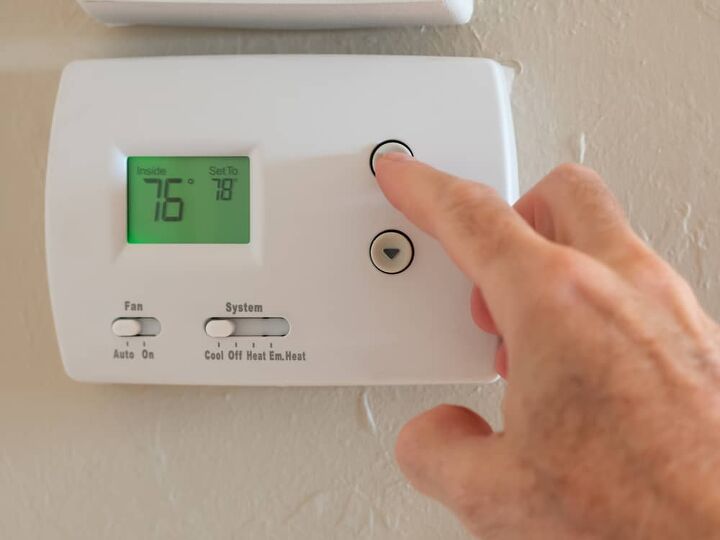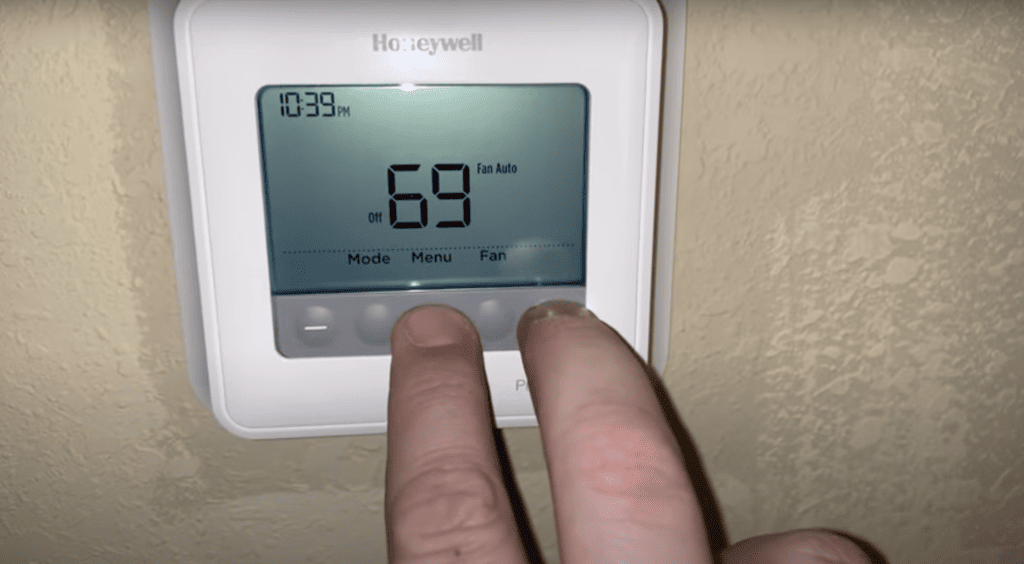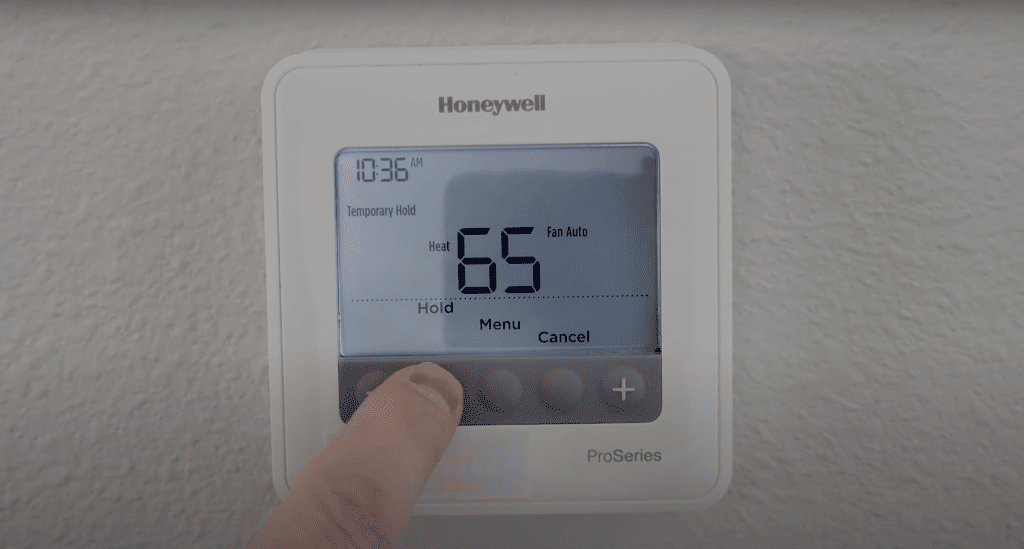Honeywell Thermostat Temperature Wrong

A Honeywell thermostat displaying an inaccurate temperature is a common issue that can lead to discomfort, wasted energy, and unnecessary HVAC system wear and tear. Understanding the potential causes and solutions is crucial for HVAC professionals, homeowners, and facility managers alike. This article delves into the reasons behind Honeywell thermostat temperature inaccuracies, troubleshooting steps, and preventative measures, offering insights relevant for HVAC students, seasoned technicians, and employers.
Understanding the Problem: Honeywell Thermostat Temperature Wrong
Before diving into solutions, it's essential to define the problem. A "Honeywell thermostat temperature wrong" scenario manifests in several ways:
- The thermostat reading differs significantly from a separate, calibrated thermometer. This is the most obvious indication.
- The HVAC system cycles on and off erratically. Short cycling or excessively long run times suggest the thermostat isn't accurately gauging room temperature.
- Uneven heating or cooling throughout the building. Cold or hot spots can result from a thermostat failing to maintain a consistent temperature.
- Unexpectedly high energy bills. An inaccurate thermostat can cause the HVAC system to work harder than necessary.
Common Causes of Temperature Inaccuracies
Several factors can contribute to a Honeywell thermostat displaying an incorrect temperature:
1. Thermostat Placement
The location of the thermostat is paramount. Avoid placing it near:
- Direct sunlight: Sunlight artificially inflates the temperature reading.
- Drafts: Drafts, from windows or doors, can lower the temperature reading.
- Heat-generating appliances: Ovens, lamps, and electronics emit heat, skewing the reading.
- Exterior walls: Exterior walls are more susceptible to temperature fluctuations.
- Behind doors: Air circulation can be restricted, leading to inaccurate readings.
2. Calibration Issues
Most Honeywell thermostats allow for temperature calibration. Over time, the internal sensors can drift, requiring recalibration. This is a common and often easily rectified issue.
3. Sensor Problems
The thermostat's internal temperature sensor can fail due to age, damage, or manufacturing defects. This is especially true for older models. Internal sensor failures often require thermostat replacement.
4. Wiring Problems
Loose or corroded wiring connections can disrupt the thermostat's ability to accurately read temperature. This is more common in older installations or areas prone to humidity.
5. Dirty Thermostat
Dust and debris can accumulate inside the thermostat, interfering with the sensor's performance. A gentle cleaning can sometimes resolve the issue. Turn off the power before cleaning!
6. Thermostat Age
Like any electronic device, thermostats have a lifespan. Older thermostats are more prone to inaccuracies and failures. Upgrading to a newer, more efficient model may be the best solution.
Troubleshooting Steps: A Practical Guide for HVAC Professionals
Here's a step-by-step troubleshooting guide for addressing temperature inaccuracies in Honeywell thermostats:
- Verify Thermostat Placement: Ensure the thermostat is not located in a problematic area as described above. Relocate if necessary.
- Check Calibration Settings: Consult the thermostat's user manual to access the calibration settings. Compare the thermostat reading to a calibrated thermometer and adjust accordingly.
- Clean the Thermostat: Turn off the power to the thermostat at the breaker. Carefully remove the thermostat cover and use a soft brush or vacuum to remove dust and debris.
- Inspect Wiring Connections: Turn off the power. Check all wiring connections for looseness or corrosion. Tighten connections and clean any corrosion with a wire brush. If unsure, consult with a qualified electrician.
- Test the Sensor (Advanced): Using a multimeter, test the resistance of the temperature sensor according to the manufacturer's specifications. Compare the reading to the expected value. A significant deviation indicates a faulty sensor. Note: This step requires technical expertise and should only be performed by qualified technicians.
- Reset the Thermostat: Refer to the user manual for instructions on resetting the thermostat to factory settings. This can sometimes resolve software glitches.
- Consider Replacement: If the above steps fail to resolve the issue, and the thermostat is old or showing signs of failure, consider replacing it with a new model.
The HVAC Career Landscape: Demand, Certifications, and Salaries
The HVAC industry is experiencing robust growth, driven by factors such as increasing demand for energy-efficient systems, stricter environmental regulations, and a growing population. The Bureau of Labor Statistics (BLS) projects a growth rate of 6% for HVAC mechanics and installers from 2022 to 2032, adding approximately 39,600 jobs annually. This makes it an attractive career path for individuals seeking stable and rewarding employment.
Salary Expectations: According to the BLS, the median annual wage for HVAC mechanics and installers was $59,620 in May 2023. The highest 10 percent earned more than $84,910. Salary varies depending on experience, location, and specialization.
Essential Certifications:
- EPA Section 608 Certification: This is mandatory for technicians who handle refrigerants. There are different levels of certification depending on the type of equipment serviced.
- NATE (North American Technician Excellence) Certification: NATE certification demonstrates competence and professionalism, increasing earning potential and job opportunities. Specializations include installation, service, and specific equipment types.
- HVAC Excellence Certification: Another respected certification organization offering a variety of credentials.
- State and Local Licensing: Many states and municipalities require HVAC contractors to be licensed. Requirements vary by location.
Career Paths: An HVAC career offers diverse paths, from entry-level installer to service technician, system designer, and business owner. Opportunities also exist in specialized areas like building automation, energy auditing, and green building technology. For example, an HVAC technician may start by assisting with installations, gradually gain experience and certifications, and eventually become a lead technician or service manager. Some choose to specialize in commercial HVAC systems or building automation, requiring further training and expertise. Others may pursue entrepreneurship and start their own HVAC business.
The Employer Perspective: Hiring and Training Skilled HVAC Technicians
For employers in the HVAC industry, finding and retaining skilled technicians is a constant challenge. Investing in training programs and offering competitive compensation and benefits packages are crucial for attracting and retaining top talent.
Key Considerations for Employers:
- Prioritize Certifications: Hiring technicians with EPA 608 and NATE certifications demonstrates a commitment to professionalism and quality.
- Offer Apprenticeship Programs: Apprenticeship programs provide valuable on-the-job training and help develop a skilled workforce. Partnering with local trade schools and vocational programs can be an effective strategy.
- Invest in Continuing Education: The HVAC industry is constantly evolving with new technologies and regulations. Providing opportunities for continuing education and professional development keeps technicians up-to-date and enhances their skills.
- Promote a Positive Work Environment: A positive and supportive work environment is essential for attracting and retaining employees. This includes fair compensation, opportunities for advancement, and a culture of teamwork and respect.
Real-World Example: From HVAC Student to Energy Efficiency Expert
Consider the journey of Maria, who started as an HVAC student at a local community college. She excelled in her coursework and obtained her EPA 608 certification. After graduation, she secured an apprenticeship with a reputable HVAC company. Over the next few years, Maria gained valuable experience in installation, service, and repair. She pursued further training and obtained her NATE certification in energy efficiency. Maria's expertise in energy-efficient HVAC systems led to her promotion to an energy auditor role, where she helps businesses and homeowners reduce their energy consumption and lower their utility bills. Maria's career path exemplifies the opportunities available in the HVAC industry for individuals who are dedicated to learning and professional development.
Preventative Measures: Ensuring Accurate Thermostat Readings
Proactive maintenance is key to preventing temperature inaccuracies and ensuring the optimal performance of Honeywell thermostats:
- Regular Calibration Checks: Periodically compare the thermostat reading to a calibrated thermometer and adjust the calibration settings as needed.
- Routine Cleaning: Clean the thermostat regularly to remove dust and debris.
- Professional Inspection: Schedule regular HVAC system inspections by a qualified technician to identify and address potential issues before they escalate.
- Upgrade to Smart Thermostats: Consider upgrading to a smart thermostat with advanced features like remote monitoring, automated scheduling, and energy usage tracking. Honeywell offers a range of smart thermostats that can improve energy efficiency and comfort.
In conclusion, addressing temperature inaccuracies in Honeywell thermostats requires a systematic approach, starting with understanding the common causes and implementing appropriate troubleshooting steps. For HVAC professionals, a strong foundation in HVAC fundamentals, coupled with relevant certifications and a commitment to continuing education, is essential for success in this growing industry. Employers play a vital role in training and developing a skilled workforce to meet the increasing demand for HVAC services.










